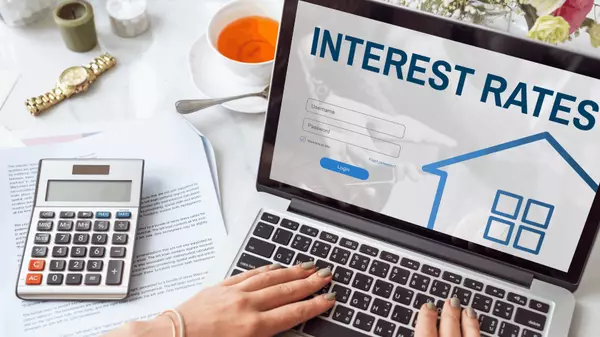

What Does Homeownership Mean to You?
Recently, I came across a podcast featuring Skylar Olsen, Zillow’s Chief Economist. Much of the conversation was what you might expect—housing market predictions for 2025 [link to blog/2025-Real-Estate-Wild-Cards], what Zillow got wrong about 2024, and a breakdown of trends shaping real estate across the country. In other words, the kind of data I live for. But as the conversation wrapped up, Olsen was asked a question that shifted the focus: “What does homeownership mean to you?” Her response? It wasn’t about numbers or investments—it was about something far more personal. And it made me stop and think about how we, as homeowners (or future homeowners), define the meaning of home. Here’s what she said—and why it stuck with me. Beyond the Numbers Olsen started by acknowledging her analytical side. As an economist, she’s naturally drawn to crunching numbers—comparing the cost of homeownership with renting or investing in stocks. And sometimes, the numbers might show that owning a home costs more than renting. But here’s where she flipped the script. “That’s the cost of ownership and customization and personalization and vision,” she said. For Olsen, the value of owning a home goes beyond financial ROI. It’s about creating something uniquely yours—a space where you can bring your vision to life in a way renting doesn’t allow. (Side note: When it comes to your monthly budget, crunching the numbers is crucial. It’s all about finding a property that fits your budget and your vision. And, of course, building equity and financial wealth plays into this, too…but let’s save that for another day.) The Freedom of Homeownership Olsen then painted a picture of her own home—something you might not expect from a Chief Economist. In her backyard, she has chickens. Fruit trees. Flowers. Even pumpkins—though some have started to rot, which, as she joked, are now destined to become chicken snacks. “That is a vision that I can’t create if I was a renter. I don’t know what landlord would let me do this craziness. And that’s what ownership means to me. It’s not just the financials; it’s the optionality, the personals. “It’s my vision, it’s my castle.” It’s a reminder that owning a home is about more than walls and a roof. It’s about having the freedom to make it your own, whether that means starting a garden, creating a space for family gatherings, or building a sanctuary that reflects your personality. The American Dream, Redefined When you hear the words “the American Dream,” it’s easy to picture the classic image of a single-family home with a white picket fence. But, it’s not the 1950s anymore—and Olsen’s perspective expands on that idea. “It’s not just, ‘Oh, I want to live in a single-family home.’ You can have the American Dream in a condo in New York—or even as a renter if flexibility is what you value most.” What really defines the American Dream, she says, is vision and choice—and for many, homeownership is the ultimate way to create something that is truly theirs. Takeaways for Homebuyers Olsen’s story offers some key takeaways for anyone considering homeownership: Focus on What Homeownership Means to YouWhile financial considerations are important, it’s equally valuable to think about the emotional and personal aspects of owning a home. What kind of life do you want to create? How do you want your space to reflect your values and goals? Homeownership Isn’t One-Size-Fits-AllThe American Dream looks different for everyone. Whether you’re envisioning a backyard full of chickens or a cozy condo downtown, it’s about finding what feels like “yours.” Consider the Non-Financial BenefitsOwning a home isn’t just an investment in property—it’s an investment in your lifestyle, your vision, and your future. From the freedom to personalize your space to the sense of stability it provides, the benefits go beyond dollars and cents. Olsen’s response reminded me why I love helping people find homes. It’s not just about the transaction; it’s about helping them create a space where they can live their vision—no matter what that looks like. So, what does homeownership mean to you? Is it the freedom to make your space your own? The stability of knowing it’s yours? Or something else entirely?
Read More

2025 Real Estate Wild Cards: What Could Shake Up the Market?
The 2025 housing market is shaping up to be an interesting one—steady growth, more inventory, and a bit of breathing room for buyers. But let’s be real: behind every steady forecast lies a handful of wild cards that could shift the game. From unexpected mortgage rate swings to federal policies that could either boost supply or throw a wrench in the system, there’s plenty to keep an eye on this year. Let’s break it all down—what the experts predict and what could really shake things up. The Big Picture: What Experts Are Saying About 2025 Before diving into the wild cards, let’s take a look at what the forecasts say about home prices, sales, inventory, and mortgage rates. 1. Home Prices: Modest Increases Ahead Analysts forecast modest home price growth in 2025, with projections ranging from 2% to nearly 5% increase. While home prices are still climbing, the pace is slower compared to recent years. This is good news for buyers facing affordability challenges, although slight increases still favor sellers who can expect equity gains. 2. Home Sales: Slight Rebound in Activity After a sluggish 2023 and 2024, existing home sales are projected to recover slightly in 2025. Higher sales activity signals a healthier market, but the pace will depend on mortgage rates and inventory growth. Sellers may benefit from increased demand, while buyers will appreciate slightly more options. 3. Inventory: A Step Toward Balance Economists agree—we can expect an increase in national housing inventory in the double digits: Inventory is finally improving, giving buyers more options and a bit more negotiating power. However, we’re still not back to pre-pandemic levels, so don’t expect the competition to disappear completely. 4. Mortgage Rates: A Wild Ride Ahead Mortgage rates are the biggest question mark. Most analysts predict rates hovering around 6%, but fluctuations throughout the year could create opportunities for those who act quickly. Buyers can be on the lookout for rate dips to lock in better terms. For sellers, rates might limit what buyers can afford, so pricing smartly will be key. The Wild Cards That Could Shake Things Up Now for unpredictable factors that could throw the market forecasts into disarray. Here’s what you need to keep an eye on, according to Realtor.com. 1. Mortgage Rate Surprises While forecasts suggest mortgage rates will hover around 6%, unexpected factors could lead to volatility. Economic growth, inflationary pressures, and Federal Reserve policy decisions will all play a role in determining where rates go. The Trump administration’s fiscal policies—including deficit-funded tax cuts and increased spending—could drive inflation higher, keeping mortgage rates elevated. Conversely, successful efforts to curb inflation might stabilize rates or lead to a gradual decline. What It Means for You: Buyers: Stay flexible and prepared to lock in a rate during any dips. Sellers: Be ready to adjust your pricing strategy if rates rise and buyer budgets shrink. 2. Federal Housing Policies With a Republican sweep of the presidency and Congress, new policies could either bolster the housing market or add to its challenges. President-elect Trump has proposed initiatives to decrease building costs and increase supply, including opening federal land for homebuilding and reducing regulatory costs. However, other policies—such as stricter immigration laws and increased tariffs—could raise construction costs and slow the progress of new home development. What It Means for You: If supply increases, buyers may see more affordable options, easing competition. However, higher construction costs could offset these benefits, keeping affordability out of reach for many. Real estate is always full of surprises, but that’s what makes it exciting. Want to know how these trends could impact you locally? Let’s connect https://www.fullerliving.group/schedule and strategize for your 2025 goals.
Read More

Home Sales Break a 3-Year Downtrend—Here’s What it Means for Your
For the first time in over three years, existing home sales increased year over year, reaching a seasonally adjusted annual rate of 3.96 million in October. So, what exactly does this mean? So glad you asked! Even though 2024 is shaping up to have the fewest home sales on record, the rise in sales this October could be a sign that the housing market is starting to recover. After a long stretch of slowing home sales, data from the National Association of Realtors (NAR) shows three main trends that are worth paying attention to: More homes are selling, and prices are still rising. Homeowners are seeing their equity grow as prices climb. There’s more inventory to choose from. For buyers, the market is offering a bit more breathing room as the number of available homes rises. Buyers are starting to come back. The year-over-year sales increase shows that demand is picking up, even with mortgage rates higher than in years past. For homeowners, this means rising equity and an opportunity to sell at peak prices. For buyers, the growing inventory could finally offer a wider selection of homes to choose from. Below, we’ll break down what’s behind the numbers, explore how rising prices and inventory are shaping the market, and share actionable insights for homeowners looking to take advantage of these trends. 1. More Homes Are Selling, and Prices Are Still Rising Homeowners, this one’s for you: the value of your home is likely continuing to grow. In October, the median existing-home price rose to $407,200—a 4% increase compared to last year. That’s the 16th straight month of year-over-year price growth. Here in Salt Lake City, the median home price was $537,000 in October, a 4% increase year over year. This shows even with historic high rates, high demand is still present and is continuing to out pace new inventory. For many sellers, this means a chance to cash in on rising equity. Lawrence Yun, Chief Economist for the National Association of Realtors, summed it up perfectly: “The ongoing price gains mean increasing wealth for homeowners nationwide.” Yun also expects home prices to continue rising over the next two years, predicting a 9% YoY increase in 2025 and a 13% YoY increase in 2026. 2. There’s More Inventory to Choose From For the past few years, buyers have faced limited options in the housing market. But that’s starting to change. The inventory of unsold homes rose 19% nationwide compared to last year, giving buyers more options than they’ve had in a while. Locally,Salt Lake City saw a 4.8% increase in housing inventory in October. This growing inventory means two things: For sellers: More competition. Preparing your home to stand out—through staging, pricing it competitively, and marketing—will be key. For buyers: A bit more choice and less pressure to bid on the first home you see. If you’ve been waiting for the market to offer more balance, this could be the sign you’ve been waiting for. 3. Buyers Are Starting to Come Back NAR’s report shows that home sales are up year over year—the first time we’ve seen this since July 2021. Even with elevated mortgage rates, buyers are finding ways to re-enter the market, driven by job stability and growing economic confidence. While mortgage rates are still hovering around 6.78% for a 30-year fixed-rate loan, they’ve stabilized. And Yun predicts they could dip into the lower 6% range in 2025. This demand is creating a sweet spot for motivated sellers: buyers are ready, inventory is growing, and prices are holding steady. Final Thoughts If you’ve been considering selling, now may be a great time to act. With prices still rising and demand picking up, listing your home soon could help you attract serious buyers and secure a strong return. Just keep in mind that more inventory means your home needs to shine. Staging, high-quality photos, and competitive pricing are more important than ever. For buyers, the good news is that you have more choices. The rising inventory is making it easier to find homes that fit your needs and budget. While mortgage rates are still higher than a few years ago, they’re stabilizing. If you’re ready to buy, the best strategy is to get pre-approved, understand your budget, and stay patient while exploring your options. For those looking for more personalized insights, I’m happy to help. Connect with me here [link to email or Calendly] for a discovery call, and we can start exploring your options.
Read More

5 Ways Your Life Will Change After Becoming a Homeowner
Homeownership is amazing—but it’s also a total lifestyle shift from the rental days. From surprise plumbing issues to finally being able to pick paint colors, there’s a whole lot that changes. If you’re considering making the leap, understanding these shifts can prepare you for what lies ahead and ensure a smoother transition to homeownership. 1. Wealth-Building Equity Owning a home means transitioning from monthly rent payments that don’t contribute to your future to mortgage payments that build equity over time. Equity—the portion of your home that you truly own—can grow as you pay down your mortgage and as your property value appreciates. Fact: According to the National Association of Realtors (NAR) Chief Economist Lawrence Yun, homeowners, on average, have 40 times the net worth of renters due to equity and property appreciation. “Homeowners’ wealth steadily rises while renters’ wealth does not,” Yun said. “If you don’t enter the housing market, you are in the renter class where wealth is not being accumulated. If you want to participate in the housing market, the sooner you get in, the sooner you accumulate wealth.” Tip: Think of your mortgage payment as a long-term investment in your future. Even though owning comes with costs, it also provides the opportunity to grow your wealth. 2. Maintenance: The Buck Stops with You One of the most immediate changes when moving from renting to owning is taking full responsibility for property maintenance and repairs. As a renter, calling your landlord to fix a leaky faucet or broken appliance was likely part of your routine. As a homeowner, you become both tenant and landlord, responsible for everything from HVAC repairs to lawn care. Tip: Start building an emergency fund dedicated to home repairs. Experts recommend setting aside 1-3% of your home’s value annually for maintenance costs. According to a 2023 survey by HomeAdvisor, homeowners spend an average of $3,192 on annual home maintenance and repairs. (source: HomeAdvisor) 3. Customization: Your Space, Your Rules One of the most rewarding shifts from renting to owning is the freedom to customize your space without seeking permission. No more restrictions on painting walls or changing light fixtures; your home is truly yours to personalize. This freedom allows you to create a living space that reflects your taste and needs. Tip: Before diving into major renovations, live in your home for a while to understand how you use the space. This way, any updates you make will be more practical and aligned with your lifestyle. 4. Community Involvement: Becoming a Stakeholder As a homeowner, you may find yourself more invested in your neighborhood. Many new homeowners take an interest in local community boards, homeowner association meetings, and neighborhood events. Unlike renters, homeowners have a vested interest in the property values of their community, so staying involved is beneficial. Tip: Join local community groups or attend neighborhood meetings to stay informed about changes in your area and network with your neighbors. 5. Predictable Payments (Mostly) While property taxes, insurance, and maintenance costs can fluctuate, one of the advantages of owning a home with a fixed-rate mortgage is knowing that your monthly mortgage payment will remain consistent. This stability can be a relief compared to potential rent hikes that come with lease renewals. Stat: A report from CoreLogic found that average year-over-year rent prices increased by 2.4% in October. While rent growth has slowed in 2024, it comes after two years of steep increases. Tip: Keep in mind that while your mortgage payment is fixed, property taxes and insurance premiums can change, so factor this into your budget. Embracing Your New Lifestyle Making the jump from renting to owning is more than just a change in living arrangements; it’s a transformation in how you approach your financial planning, home maintenance, and community involvement. While the responsibilities can be more significant, the benefits of equity, personalization, and stability make homeownership a rewarding journey. Understanding these lifestyle changes before you purchase can help you prepare for what’s to come and make your transition to homeowner status as smooth as possible. With the right mindset and resources, moving from renter to owner is a change worth making.
Read More
Categories
Recent Posts










